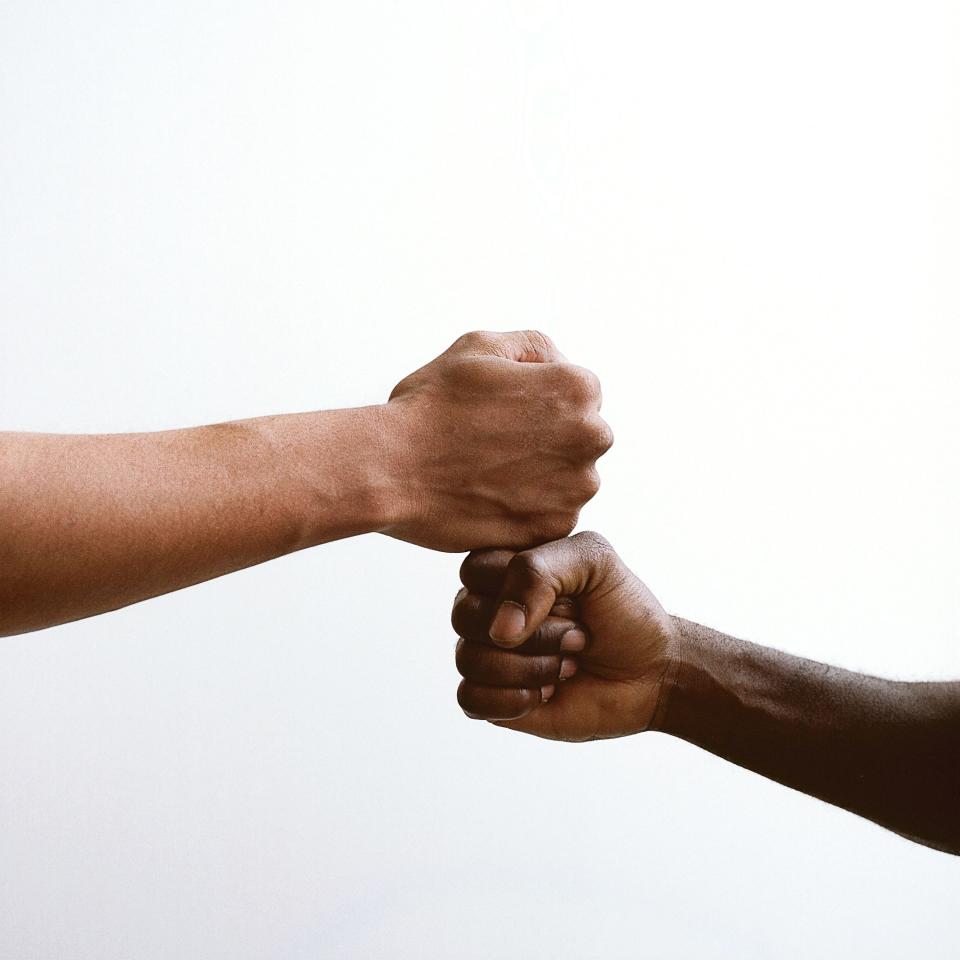Legacy of the dap: Black soldiers and the Vietnam War
It's a rhythmic handshake that feels like a coded high-five, ending with a warm yet masculine embrace. It's a fist bump morphed into a climatic snap of the fingers and clasp of hands.
Sometimes it gets intricate, even athletic, depending on the people in play, the occasion, the environment. Which is easy for a decades-old form of endearment.

The dap, once banned and objectified, is now as near universal in America as combo meals and streaming services. Co-opted and watered down a generation ago but still maintained in urban dwellings. Its origins, though, are found in the midst of the political turbulence and racial unrest of the 1960s as the Vietnam War unfolded.
In a land far away from home, Black soldiers found a way to express solidarity and transmit messages of trust and rapport as they faced danger from the enemy and racial discrimination within their own ranks. Soldiers fought in integrated units, even as the fight for desegregation and civil rights took place at home in the U.S.
Dap stood for dignity and pride.
"Black GIs, sailors and Marines understood that when they dapped, whites balked at the disruption and watched with a mixture of 'consternation, curiosity, and resentment,'" Kimberley L. Phillips wrote in the 2012 book, "War! What is it good for?: Black Freedom Struggles and the U.S. Military from World War II to Iraq." She wrote that "Many commanders considered the dap and the abandonment of military deference as a display of mass subordination, others considered it nonsensical and disruptive."
Not everyone saw it that way.
“I saw it as a source of morale and esteem and pride among the African American soldiers, and some of the white soldiers picked it up a little bit, too,” said retired Lt. Col. Joseph B. Anderson, 80, who is Black, served in Vietnam and now lives in Detroit. Anderson's tours in Vietnam were depicted in the Academy Award-winning documentary "The Anderson Platoon."
More than 300,000 Black Americans served in Vietnam, representing 16.3% of the armed forces when 12% of the U.S. population was Black, according to the African American Veterans Monument. They made up 25% of enlisted troops, but just 2% of officers.
A nearly universal sign with particular roots
Nowadays, it's not uncommon to see athletes of all races embrace the handshake. Middle school girls. Strangers. Well, with exceptions: There's also the infamous Key & Peele comedy sketch depicting President Barack Obama using the dap-style handshake following a speech, changing the style as he greets members of varying races.
"It's an acknowledgment of a shared cultural identity," said Hasan Jeffries, an associate professor of history at Ohio State University in Columbus, Ohio. He's the younger brother of Hakeem Jeffries, the minority leader of the U.S House of Representatives.
Michael Eric Dyson, a renowned national author and professor at Vanderbilt University, said the dap is an extension of Black male rituals of handshaking, a means of nonverbal identification.
So much, Dyson added, that it's "become part of the larger language and vocabulary of America."
LaMont Hamilton, a multidisciplinary artist, photographer and documentary maker, said it's important to preserve the history of the dap. Hamilton served as a consultant for the 2020 Spike Lee film "Da 5 Bloods" which tells the fictional story of a group of Black soldiers returning to Vietnam hunting for treasure they left behind.
Hamilton served as a 2014 research fellow with the Smithsonian Center for Folklife and Cultural Heritage. He said it's important to draw a distinction between the camaraderie-driven daps born out of the Vietnam War and what he refers to as the "expressive handshakes" in wide use today. After all, he said, the original dap created special bonds in perilous moments and their unique history needs to be preserved.
"I know I can trust you. I know I can trust you with my life, and you know you can trust me."
A simple handshake today, Hamilton added, doesn't have life and death connected to it.
USA TODAY Network Staff writer Angele Latham contributed to this report.
This article originally appeared on Nashville Tennessean: Dap: During the Vietnam War, trust often starting with a hip handshake

